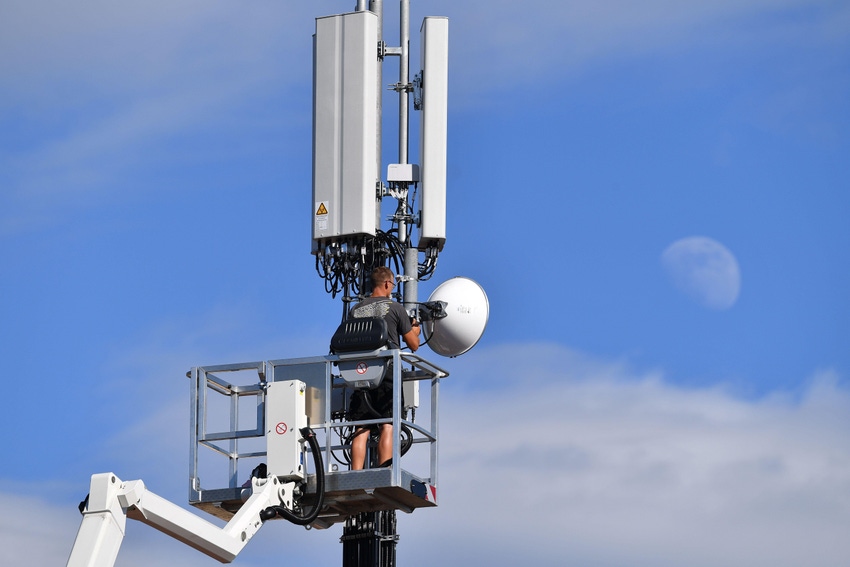Crown Castle to accelerate small cell pace in 2024
Crown Castle expects new tower leasing to decelerate in 2024 indicating that wireless industry belt-tightening will continue. But the company remains upbeat about small cells.

Crown Castle executives revealed that they will meet their planned goal of deploying 10,000 small cells this year, which is double the number of small cells the company deployed in 2022. Plus, Crown Castle said it expects to increase its small cell deployment in 2024 to 14,000 nodes.
Crown Castle is seeing a growing demand for small cells as operators turn their attention to filling coverage gaps and solving capacity issues in their 5G networks with small cells now that their 5G macro networks are largely deployed throughout the US.
During an interview with Light Reading prior to announcing the company's third quarter earnings, Chris Levendos, EVP and COO of Crown Castle, said that the company will be able to double the number of small cells it built this year because it established a process that streamlines small cell deployment.
Crown Castle executives told investors during the company's earnings call that the company currently has 115,000 small cells on air and it expects to generate 13% growth in small cells in 2024. Crown Castle noted during its call that the 115,000 small cell number is down from 120,000. This reflects the 5,000 small cells that were decommissioned because they were Sprint small cells that are no longer necessary following T-Mobile's purchase of the company.
Levendos said that the ease with which Crown Castle can get permits approved, and whether it has easy access to power and backhaul, all help determine whether a small cell is going to get deployed. If there's an issue in any part of the process, then Crown Castle sends in a team of people to work with local and state leaders to try to find a solution.
Levendos added that it's important for Crown Castle to have these guidelines in place so it can meet timelines for its network operator customers. "We have to keep to our timelines," he said. "That's why customers come back to us with larger volume investments."
Belt-tightening continues
Crown Castle's small cell advances are one area of good news for the company that reported weaker-than-expected third quarter earnings. Crown Castle reported total revenue of $1.6 billion, an increase of just 1%, or $9 million, over the same quarter in 2022. It also reported a net income of $265 million, a decrease of 37% compared to the same quarter a year ago. This included $72 million of charges related to Crown Castle's restructuring plan it announced in July.
That restructuring plan, which included layoffs to 15% of Crown Castle's workforce, is expected to result in $30 million in savings this year and $35 million in savings in 2024.
But Crown Castle's outlook for 2024 is not rosy. Crown Castle said that it plans to relocate approximately 1,000 employee positions from several locations nationwide to a centralized location by the end of the third quarter of 2024. This is expected to result in additional cost savings.
In addition, the company expects tower site rental revenues of $6.4 billion in 2024, down 2% compared to 2023. The company's net income is projected to be $1.23 billion, down 15% compared to 2023.
Crown Castle CEO Jay Brown told investors on the company's third quarter earnings call that the company is putting more money into small cells because it believes the potential for multi-tenant small cell systems is attractive. In fact, Brown said that in some locations where Crown Castle gets three tenants on a small cell, "we get the very attractive returns that would exceed those of even towers."
Power to the cell site
Levendos said that the company's small cell deployment benefits greatly from Crown Castle's relationships that it has nurtured through its traditional tower business including its work with utilities.
"We have good relationships with our utility partners," said Wes Jones, director of network permitting and utilities at Crown Castle. "We have teams that look at various power source locations and identify them. We want the shortest path to power and it's key to have a utility that has flexible options."
Jones added that in some cases, small cells require a meter, and in other cases they can be outfitted with an unmetered power source, which makes it much faster to get the small cell up and running. Another streamlined process for getting power to the small cell is using an existing street light circuit.
There are solutions being developed to ease some of the roadblocks to getting power to small cells. Enersys, which provides energy solutions for a number of industries, recently demonstrated its DPX Distributed Power Transport system that it believes can alter the way power is distributed to small cells. With just one permit and one connection to the power grid (or grid tap), the DPX system can deliver power to up to 10 different small cells and those small cells can be up to 1 mile away from the grid tap. The system also allows for customers to remotely turn the power on or off, which can significantly reduce the number of truck rolls required to a site if maintenance is needed.
Enersys said the DPX is currently trialing its technology and it expects it will be commercially available in 2024.
Enersys representatives at the recent MWC Las Vegas conference said that the company is targeting both mobile operators and tower companies with its solution.
About the Author(s)
You May Also Like












